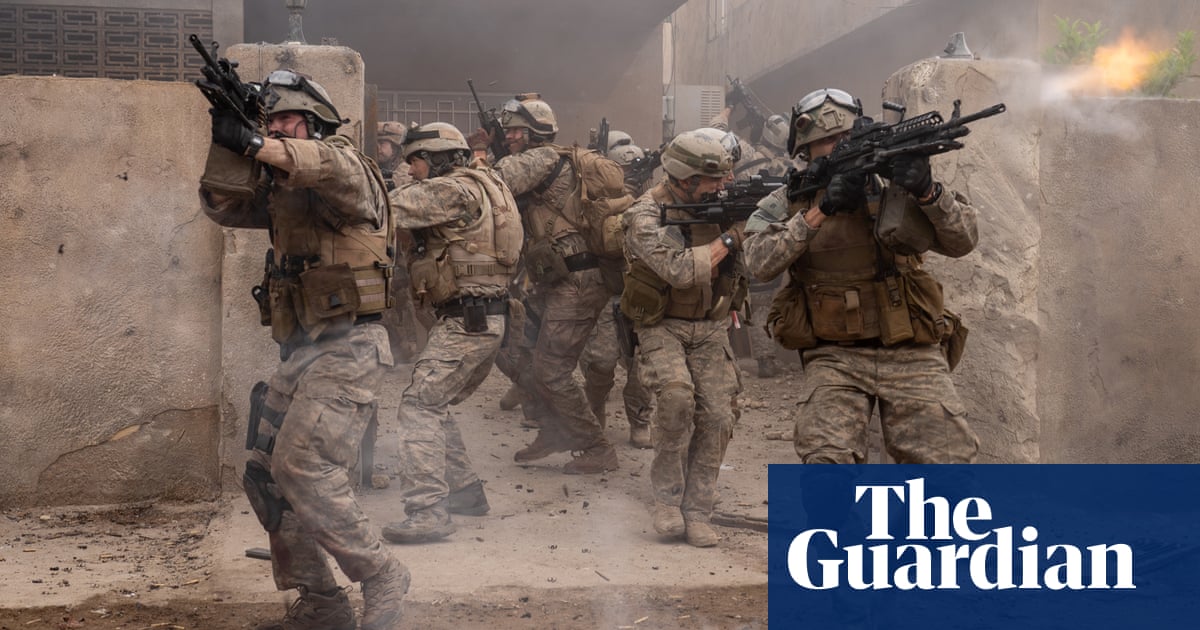Photo credit: www.theguardian.com
Warfare: A Raw Reflection on the American Experience in Iraq
Warfare, the latest film from director Alex Garland and co-writer Ray Mendoza, delves into a singular moment during the American military engagement in Iraq, specifically on November 11, 2006, in Ramadi. The film begins with familiar war movie tropes—a date, a location, and a brief outline of events—but presents an unusual twist: instead of a standard disclaimer that it is “based on a true story,” it states, “This film uses only their memories.” This choice signals a departure from conventional storytelling, opting for an unfiltered portrayal of events through the lens of those who experienced them.
The film’s focus on authenticity has been a highlight in various discussions surrounding its release, as it endeavors to achieve what many have dubbed the “most accurate war film possible.” Attention to precise detail prevailed—every element included was cross-verified against multiple accounts. The film’s immersive sound design, crafted by Glenn Freemantle, envelops viewers in the cacophony of war, capturing everything from the hum of civilian conversations to the striking sounds of military engagements. The harrowing intensity of the film is palpable, particularly during a scene where Navy SEALs dance to Eric Prydz’s “Call On Me,” emphasizing their youth amidst the chaos. But the narrative largely unfolds in real time, depicting the soldiers’ experiences in a chosen home, where they engage with elusive insurgents amid a backdrop of military jargon.
Warfare takes a distinct approach compared to other post-9/11 war films. Titles like Black Hawk Down and Zero Dark Thirty present polished narratives filled with defining character arcs and dramatic structures, often glorifying military efforts while acknowledging the complexities of conflict. Conversely, Warfare features a cast of emerging actors—like Charles Melton, Kit Connor, and Will Poulter—who, despite their star potential, blend into the collective unit, stripped of individual backstories and camaraderie typically found in war narratives.
What sets Warfare apart might not just be its remarkable depiction of warfare but also its embrace of unvarnished reality: war is not only about conflict, but also about moments of uneasy stillness. The film builds tension slowly—nearly half its runtime elapses before action occurs, emphasizing the constant dread of potential violence. When the first grenade is thrown, the brevity of the moment underscores the unpredictability and terror of combat. As the film progresses, Garland and Mendoza do not shy away from the gruesome reality of injury and suffering, amplifying the rawness of these experiences without providing a moment of relief or resolution.
This isn’t Garland’s first venture into pragmatic depictions of conflict; his previous work, Civil War, illustrated a fictional civil conflict in the U.S. with a detached perspective of military journalists searching for truth amid chaos. While that film excelled in visceral sound design and immersive combat realism, it struggled to deeply engage with the underlying political narrative that drives such conflicts. Warfare, however, actively avoids explicit political commentary while refraining from simplifying the moral landscape, as it presents the painstaking truths of combat grounded in personal memories. This technique circumvents the predictable moral posturing often seen in films about the “war on terror,” allowing a focus on the immediate human experience rather than a crafted ideological message.
Warfare’s focus on memory and experience highlights a disconnect for many Americans regarding their military. With less than 1% of the U.S. population having served in military operations in Iraq and Afghanistan, there is a noticeable gap in personal ties to the realities of war. This stark difference was once almost universally understood, as approximately 10% of the population served during World War II. Warfare serves as a poignant reminder of how detached the public has become from the lives of those involved in the military, especially during a prolonged conflict that lasted over a decade, affecting countless individuals.
The film’s singular lens on American soldiers presents challenges, notably excluding broader perspectives, including those of displaced Iraqi families and local scouts. This omission raises critical questions about representation and the limitations of understanding the conflict from a sole viewpoint. Yet, this choice can be seen as a stark acknowledgment of the failings surrounding the conflict, highlighting the emotional desensitization and moral setbacks that conflict can inflict on those involved. While the film shows a brief glimpse of the aftermath faced by Iraqi civilians as U.S. forces depart, it also poses a somber reflection on the overarching narratives left unaddressed after the credits roll—stories that Hollywood has largely overlooked but are vital to truly understand the scale and implications of such confrontations.
Source
www.theguardian.com

